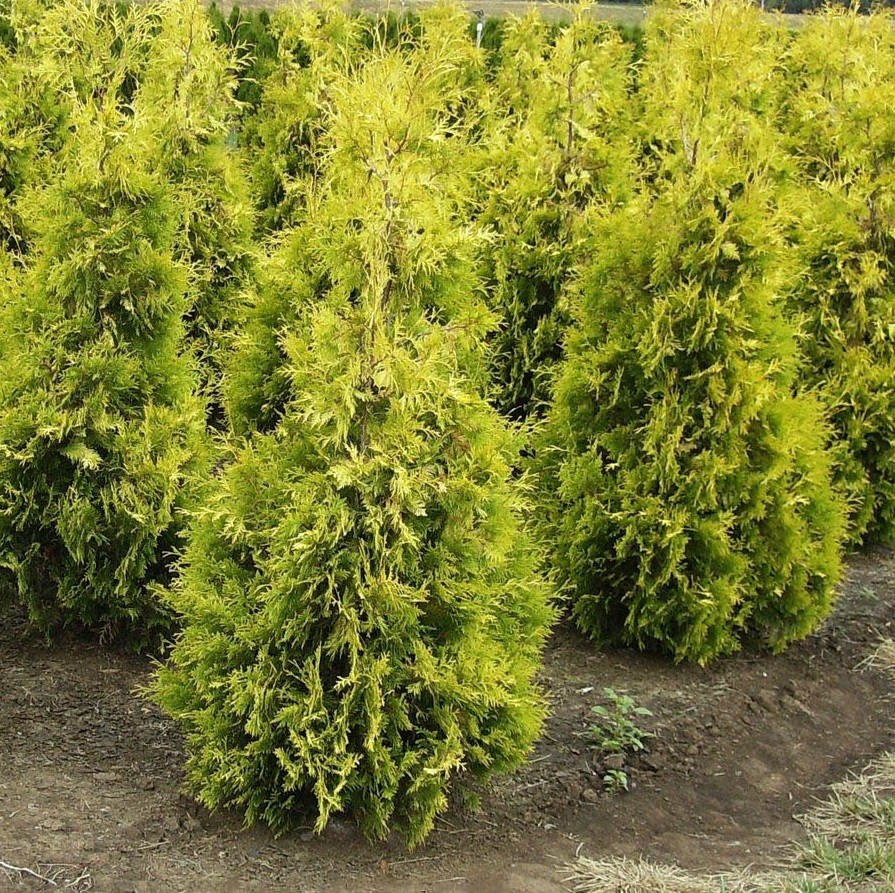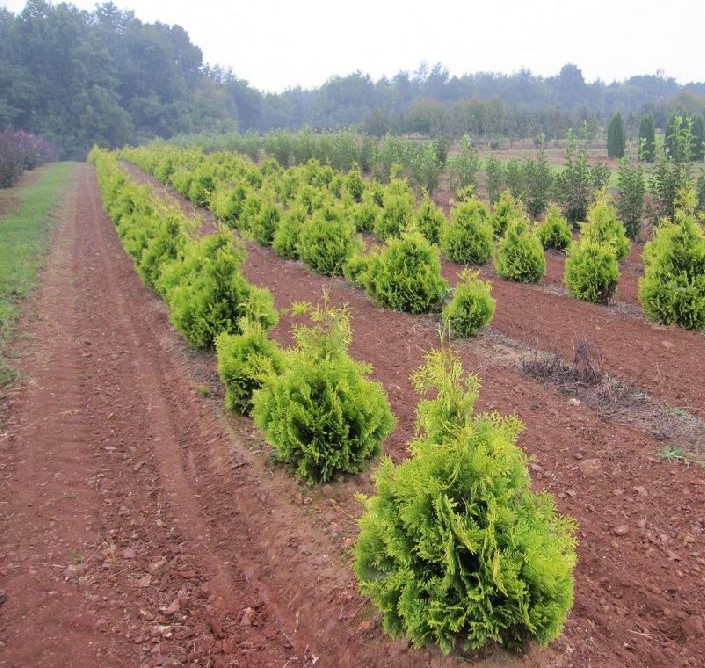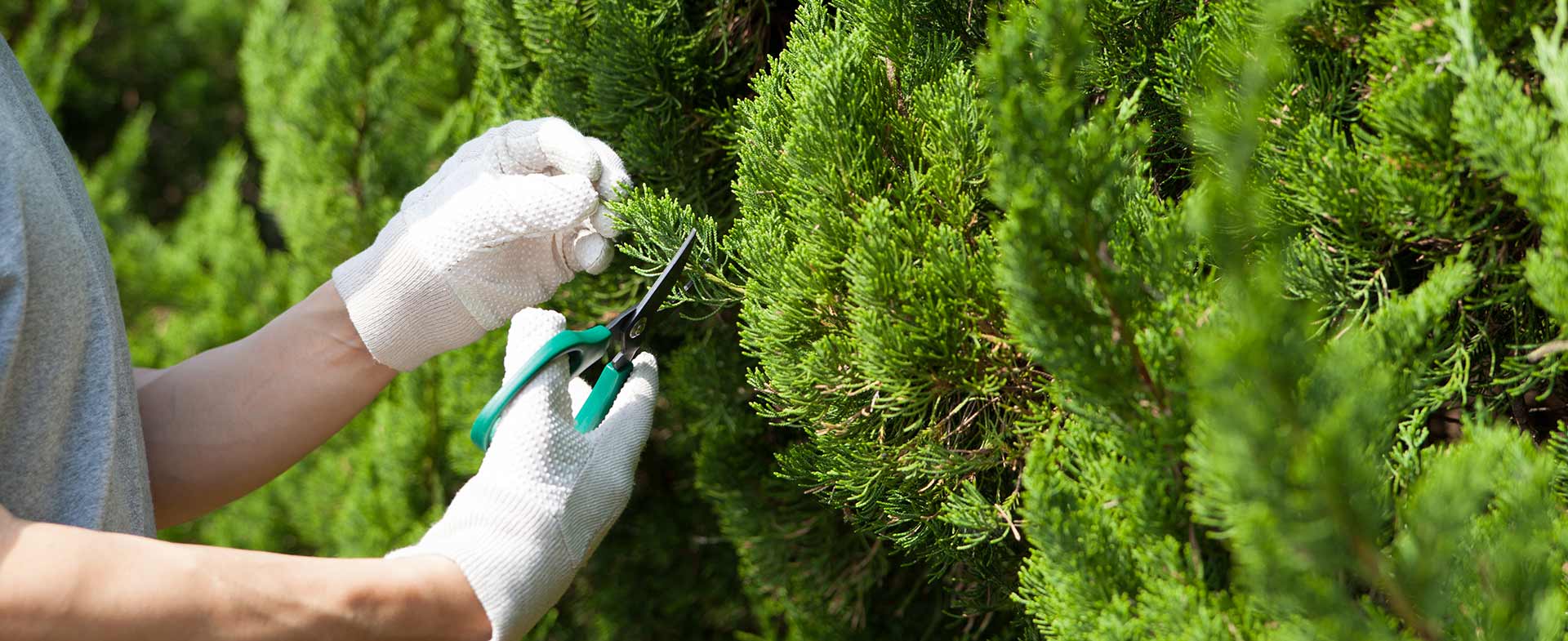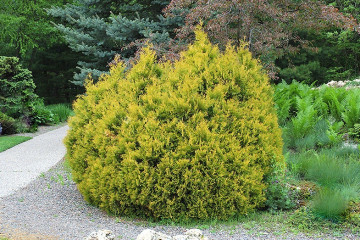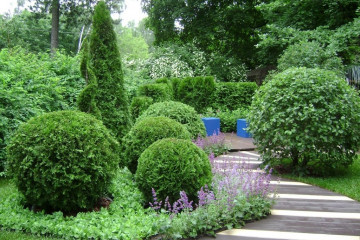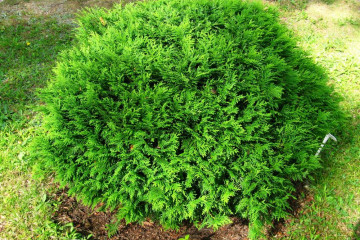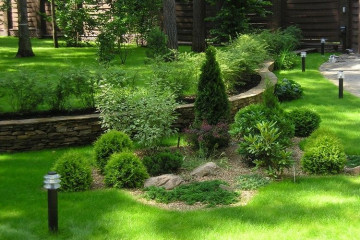Thuja Yellow Ribbon (Yellow Ribbon) western - description
Content:
Thuja Ellow Ribbon occupies a special position among conifers. Gardeners appreciate it for its unusual color and small stature. The crown of this small coniferous tree has a canonical shape. Its color changes from green to light brown in winter.
Thuja Yellow Ribbon (Yellow Ribbon) western
Thuja western Yellow Ribbon is a representative of the Cypress family and is considered the progenitor of numerous breeding varieties that are specially created for ornamental gardening. This species is distinguished by its exotic color of needles and high winter hardiness, as a result of which it is used in landscape design in all climatic zones of the Russian Federation.
Thuya Yellow Ribbon: description and dimensions
Thuja stands out among other trees in a pyramidal shape with a dense dense shape. Trees grow short, rarely they can reach a height of 2.5 m. If such indicators are recorded, then in order to reach them, thuja must grow for at least 15 years. The tree grows very slowly, the life period varies from 30 to 35 years.
The tree is distinguished by a straight trunk with short skeletal branches tightly pressed against it. His crown is compact and thick. The bark of young shoots is olive green, while older trees are dark blue. Cones that appear on the tree are formed in small numbers, they are scaly brown in color. The cones are about 13 cm long. The tree is excellently resistant to drafts and strong winds, and is also not susceptible to gas and smoke.
How fast it grows
Thuja grows very slowly. For a long time, it grows in height up to only 2 m and 0.8 m in diameter. And he achieves this in 15 years. At the same time, it can be grown in one place for 50 years, and with careful and proper care, the age can reach 100 years.
Planting and leaving
Thuja is classified as an unpretentious plant that can be grown in any type of soil that lacks groundwater. But maximum growth and beauty can be achieved only on light loams and sandy loams.
How to plant Tuy Yellow Ribbon
In order for the thuja to grow well and comfortably, it is necessary to properly prepare a planting hole for it:
- It must necessarily exceed the container in all respects by 20 cm.
- At the bottom of the pit, a drainage layer of river jackdaws, expanded clay or broken brick is laid out.
- Then the hole is half filled with nutrient soil, which must necessarily include sand, peat and garden soil.
- A seedling from a container is transplanted into a planting pit.
- When transplanting, be sure to ensure that the root collar is located at ground level.
- The soil is carefully compacted, eliminating air voids, and the tree is watered abundantly.
Watering mode
The tree of this species is moisture-loving, therefore it is necessary to ensure systematic watering and carefully monitor the replenishment of liquid reserves. In a hot period of time, experts recommend watering the thuja at least three times a week. The rest of the time, it will be enough to do this weekly. Pour one bucket of water under one tree at a time.
Top dressing
After planting, there is no need to feed the tree for the first few years. After this time, it is necessary to systematically apply potash and phosphorus fertilizers.
Features of summer care
Despite the fact that the western yellow Ribbon thuja has an exotic appearance, it is not very difficult to care for it, but it must be done regularly. Otherwise, there is a possibility that the tree will lose brightness, the needles will become dull, and many cones will form, which will negatively affect the appearance.
To make the thuja look attractive all year round, you need:
- promptly eliminate weeds;
- keep the trunk circle clean;
- water the tree weekly;
- give preference to moderate feeding;
- trim thuja every spring.
Preparing for winter
Like all plants and many trees, thuja needs not only care in warm weather, but also careful preparation for winter. Before the cold weather sets in, the tree should be insulated; for this, the trunk circle is mulched with peat at least 10 cm high.
Also, trees can be wrapped in burlap or put on special bags that effectively protect them from snow, wind and cold. In order to avoid burns at the end of February, it is recommended to cover the thuja from the bright spring sun.
Reproduction
All thuja, regardless of size and variety, are propagated by cuttings and seeds. Thuja Yellow Ribbon is no exception. Seeds are extracted from carefully cut cones, which are thoroughly dried beforehand. Then they are stored all winter in cloth bags. Seeds are planted in the spring as soon as the snow melts.
The seeds are placed in the ground at a depth of at least 30 cm. It is recommended to plant no more than 5 g of seeds per 1 m². After placing them in the ground, the seeds are sprinkled with coniferous sawdust. From this time on, the seedlings must be systematically and thoroughly watered.
Propagation by cuttings
According to the experience of many gardeners, the most common way to propagate Thuja Yellow is by cuttings. To do this, you need to cut twigs in the fall. It is best to do this in November, and if the autumn is protracted, then it is best to wait until December.
To prepare the cuttings, you must carefully cut them from the tree, and then dip them in a growth stimulator. To root them, you can use open ground or a special container. At the initial stage, it is recommended to cover the seedlings with plastic bottles or special film. Depending on the condition of the soil, the frequency of watering is determined, but, as practice shows, such procedures must be carried out carefully and systematically.
Why does thuja Yellow Ribbon turn yellow
A complex of reasons can provoke yellowing of thuja: from the most elementary ones, which consist in improper care, and to nutritional deficiency. Due to certain factors, the tree's immunity is weakened and diseases and pests can easily damage it.
Dust can provoke yellowing, especially if the plant is grown in an urban environment. To save the plant, it is necessary to systematically irrigate.
Insufficient watering can also be the reason when the plant begins to dry out. If the thuja has begun to turn yellow, then sucking insects, such as a bug, moth, thuja aphid or mealybug, may be the cause of this condition. It is these pests that suck out all the nutrients from the plants. Their appearance can be prevented by spraying with karbofos.
The tree belongs to the selective varieties of western thuja. This evergreen culture is distinguished by its unusual color of needles, which changes three times during the spring-summer season. The tree is distinguished by its unpretentious care and attractive appearance. Thuja Ellow can be grown in all climatic zones of Russia, since the plant is winter-hardy.
